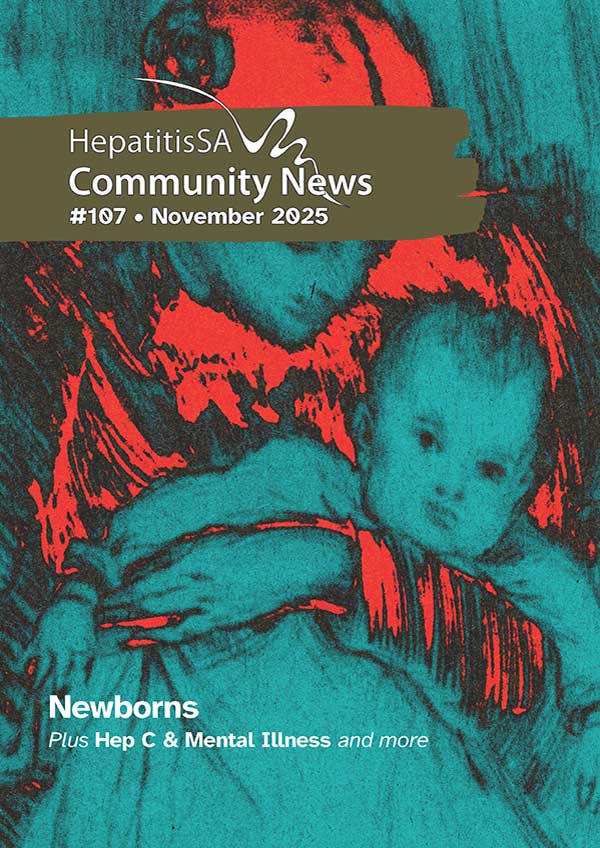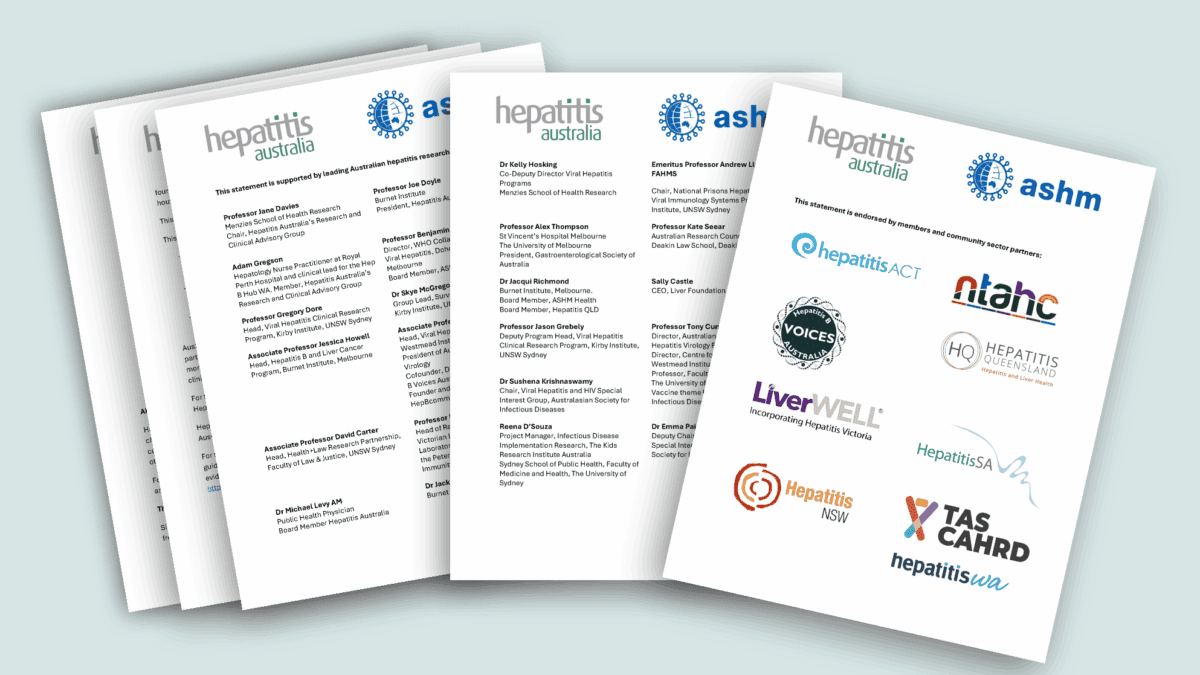As Australians with hepatitis C are being cured at unprecedented rates, there is promise of a better medicine for those living with chronic hepatitis B who need treatment.
The Pharmaceutical Benefits Advisory Committee (PBAC) will, in March, consider for recommendation, a new medicine which promises the same efficacy as current drugs but with less toxic side effects.
The current medicine, tenofovir disoproxil fumarate (TDF), is effective in suppressing the hepatitis B virus but is also linked to bone density loss and renal dysfunction in some patients. This is due to the high level of tenofovir circulating in the body.
Less toxicity
TDF – also known as Viread – is a tenofovir prodrug, an inactive compound which converts to tenofovir in the body, after it is ingested.
Another new prodrug (TAF or Vemlidy) is now available which can achieve the same level of virus suppression with one-tenth the dosage. This results in a lower level of tenofovir circulating the the body, thus reducing the damaging effect on bone density and renal function.
The new medicine – tenofovir alafenamide (TAF) has more stable structure which allows a more efficient delivery of tenofovir to the liver cells. The treatment is given as a once daily tablet. Each TAF tablet is 25 mg compared to 245 mg for TDF.
About 213,000 Australians live with hepatitis B and about 380 die each year from hepatitis B related causes. It is a leading cause of liver cancer, the cancer with highest rate of increase in Australia.
Not everyone with chronic hepatitis B needs treatment but experts have estimated that at any given time, 15 per cent will require treatment. If the condition is left unmanaged, one in four people with chronic hepatitis B will face adverse outcomes such as liver failure or liver cancer.
A better medicine with less toxic side effect would encourage more people who need hepatitis B treatment to take it up.
Treatment uptake among Australians living with chronic hepatitis B is lower than the recommended 15 per cent. South Australia’s treatment rate at 2.9 per cent, is significantly below the national average of 5.3 per cent.
Saving money and lives
A recent study by specialists from the University of Flinders show that increasing the treatment rate from 2.9 per cent to 10 per cent would save the state almost $14 million over the next 10 years, and almost $23.8 million if treatment uptake was increased to 15 per cent.
Increasing the treatment rate from 2.9 to 15 per cent would also halve the number of liver cancer cases over the next 10 years. (See issue #72 of Hepatitis SA Community News for more.)
A better medicine with less toxic side effect would encourage more people who need hepatitis B treatment to take it up.
That will provide a better quality of life and better outcomes for Australians living with chronic hepatitis B. In the long run it will also reduce the burden on the health budget.
The US Food and Drug Administration (FDA) cleared TAF for use with hepatitis B in November 2016, and the European Commission has authorised it for marketing in the EU. It is not unreasonable to hope that this new treatment will be made available soon in Australia on the Pharmaceutical Benefits Scheme.
Update (27 April 2017) – The PBAC has recommended listing tenofovir alafenamide 25 mg tablets for treatment of chronic hepatitis B at its March 2017 meeting.
More information:
Medscape | Journal Watch | PBAC March agenda | PBAC Recommendation
Last updated 3 June 2024
More from:
Enjoyed this article? Subscribe to be notified whenever we publish new stories.
Subscribe for Updates





